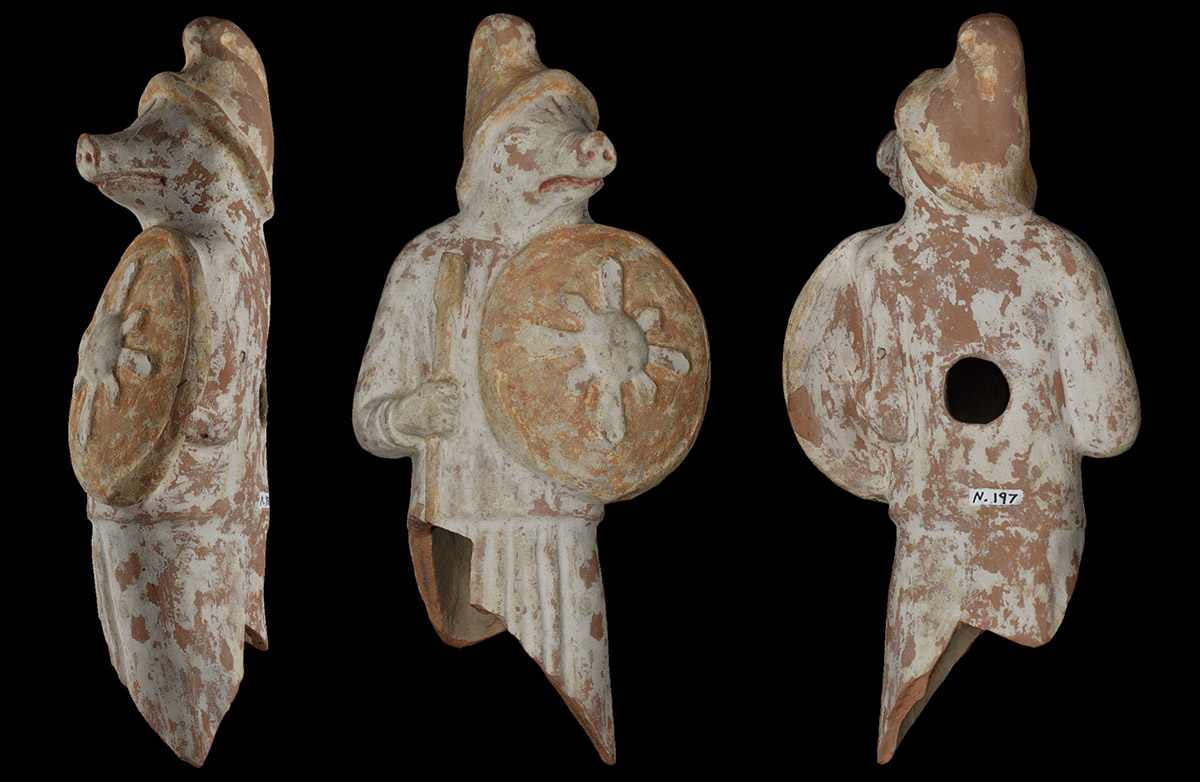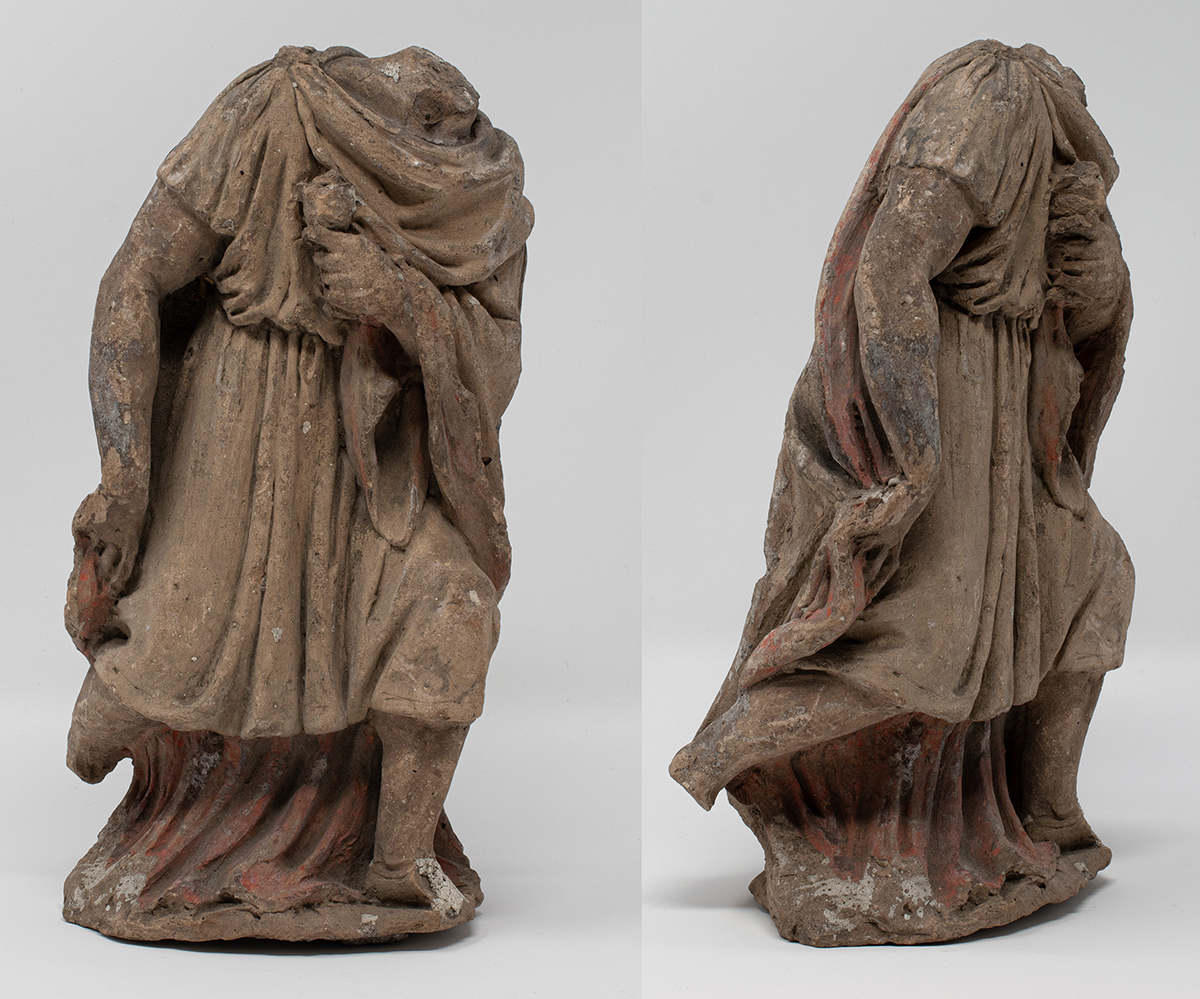Authenticity Studies, Fall 2024
This project is part of a larger effort to examine the early acquisition history of the museum. It was also inspired by the enthusiasm and curiosity of undergraduate and graduate students in Phil Stinson’s course, “CLSX 480: The Classical Museum in Context.”
Authenticiation is one of the professional and ethical obligations of small academic museums and contributes to their trustworthiness as public institutions (AAM 2021). With funding from the University’s General Research Fund, the project tested terracotta objects from the collection of the museum using scientific thermoluminescence (“TL”). This method estimates the time elapsed since a terracotta object's last firing.
American Alliance of Museums, “Museums and Trust 2021,” available at: https://www.aam-us.org/2021/09/30/museums-and-trust-2021/.
Team Members
Phil Stinson, Classics
Caroline Sickinger, Fine Art Conservation Studio
Oxford Authentications, Ltd.
Collaborators and Advisors
Robert Cohon, Kansas City Art Institute
Frances Gallart-Marqués
Social Media
Caroline Lunt, Classics
Case 1. Terracotta Armed Pig (N. 197)
Description (current catalog entry): Mold-made figure of standing anthropormorphic pig wearing long-sleeved tunic and Trojan cap and holding spear in right hand and shield in left, both held close to body; head, turned to left, eyes, wrinkles on "forehead" and on snout articulated. Broken off diagonally along lower portion of tunic.
Dimensions: H. 22.6 cm; W. 10.24 cm; Th. 5.7 cm
Date of Acquisition: 1955
Source: Carucci Collection
Provenance: Italy
Previous Estimated Date: 3rd-2nd c. BCE
New Estimated Date on Basis of TL Test: ca. 1925-50
TL tests carried out by Oxford Authentications Ltd. on two powdered clay samples from the piece yielded similar results with an estimated firing date of less than 100 years ago. Considering the piece was acquired in Rome in the mid-1950s, our armed pig may have been manufactured not long before this time. The authenticity of the piece can also be called into question on the basis of formal features compared to two other similar terracotta pigs from museum collections in Italy and another from a private collection (all unpublished), mainly the unusual crispness of the pig’s molded form and the good preservation of the painted decorations.
Terracotta Armed Pig (N. 197)

Case 2. Kneeling Gaul (N. 415)
Male genuflecting with left knee bent, wearing short-sleeved, bloused tunic reaching below knees; both legs wear tightfitting leggings, bunched at ankle; cloak hooked on right shoulder falling in catenaries on chest, pulled up over left arm held up to chest with sword or dagger in hand. Remains of red paint on cloak. Head broken off, sword or dagger broken off. Traces of modern mortar. Handle of sword or dagger previously misidentified as a goblet.
Dimensions: H. 21.3 cm; W. 10.2 cm; Th. 6.5 cm
Date of Acquisition: 1909
Source: Magoffin Collection
Provenance: Italy
Previous Estimated Date: 2nd c. CE
New Estimated Date Based on TL Testing: ca. 1795-1875 CE
The piece appears to represent an ancient Roman Gaul or Dacian, a “barbarian,” and draws comparisons to Gauls or Dacians in Roman imperial art. However, similar works in terracotta are unknown to the project team, and the piece's uniqueness drew its authenticity into question. Most ancient fired terracottas from the Mediterranean region are hollow on the inside to prevent damage during firing, but this piece is solid. Traces of mortar on the piece had supported a dating in classical antiquity in suggesting secondary usage in wall construction, but these mortar touches could have been added by the producer.

Kneeling Gaul (N. 415)
Conclusion: These objects will remain in the collection of the museum and on display. Currently, QR codes next to each piece take the museum visitor to this informational page. The Armed Pig and the Kneeling Gaul are important pieces in the museum's collection for understanding the culture of collecting during the early period of the museum's history in the late 19th - early 20th century.
